Abstract
Instructions, discrimination procedures, and sources of reinforcement were manipulated in order to determine the bases for the maintained “non-reinforced” imitations observed in generalized imitation research. Six girls received imitation training from two experimenters. One experimenter modelled only reinforced responses; the other modelled only non-reinforced responses. The children imitated all responses when no reinforced alternative was available, even though results of choice procedures and special instructions clearly demonstrated that they discriminated reinforced from non-reinforced responses. Instructions not to perform non-reinforced imitations immediately eliminated these behaviors. It is suggested that social setting events may be largely responsible for generalized imitation.
Full text
PDF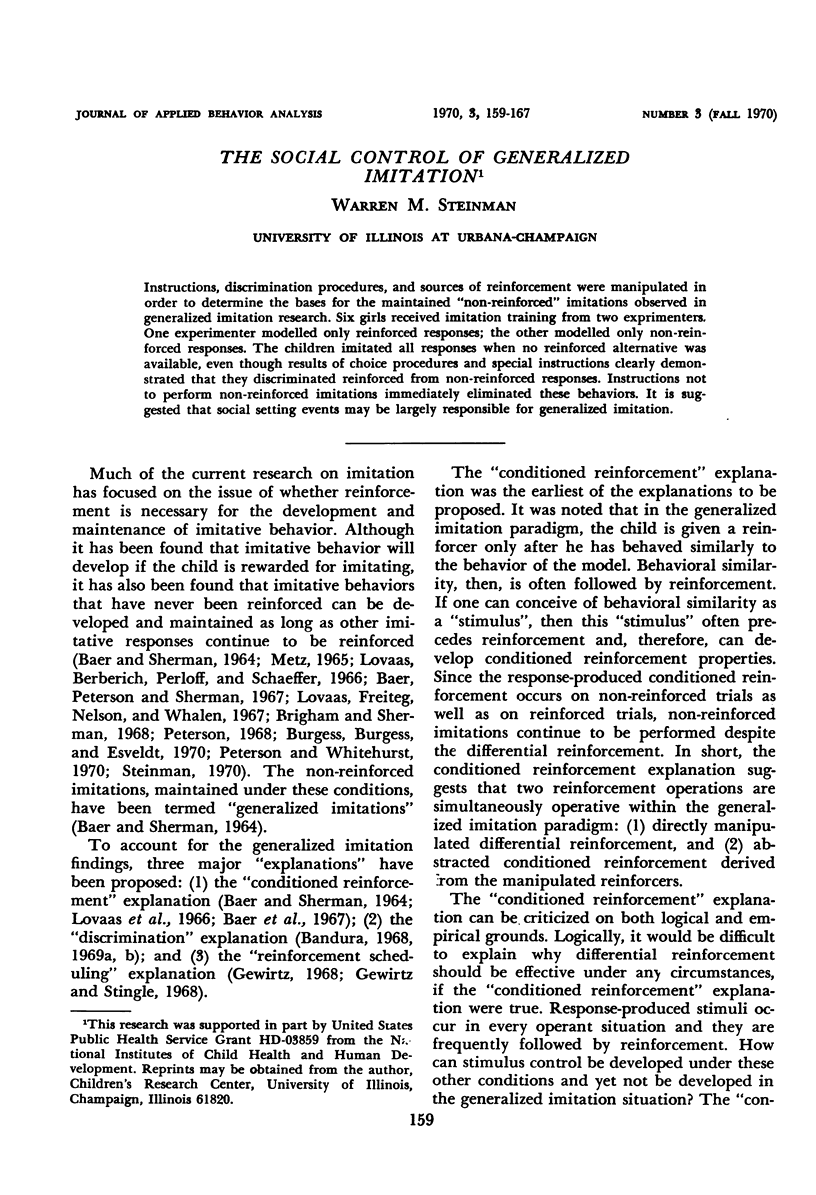


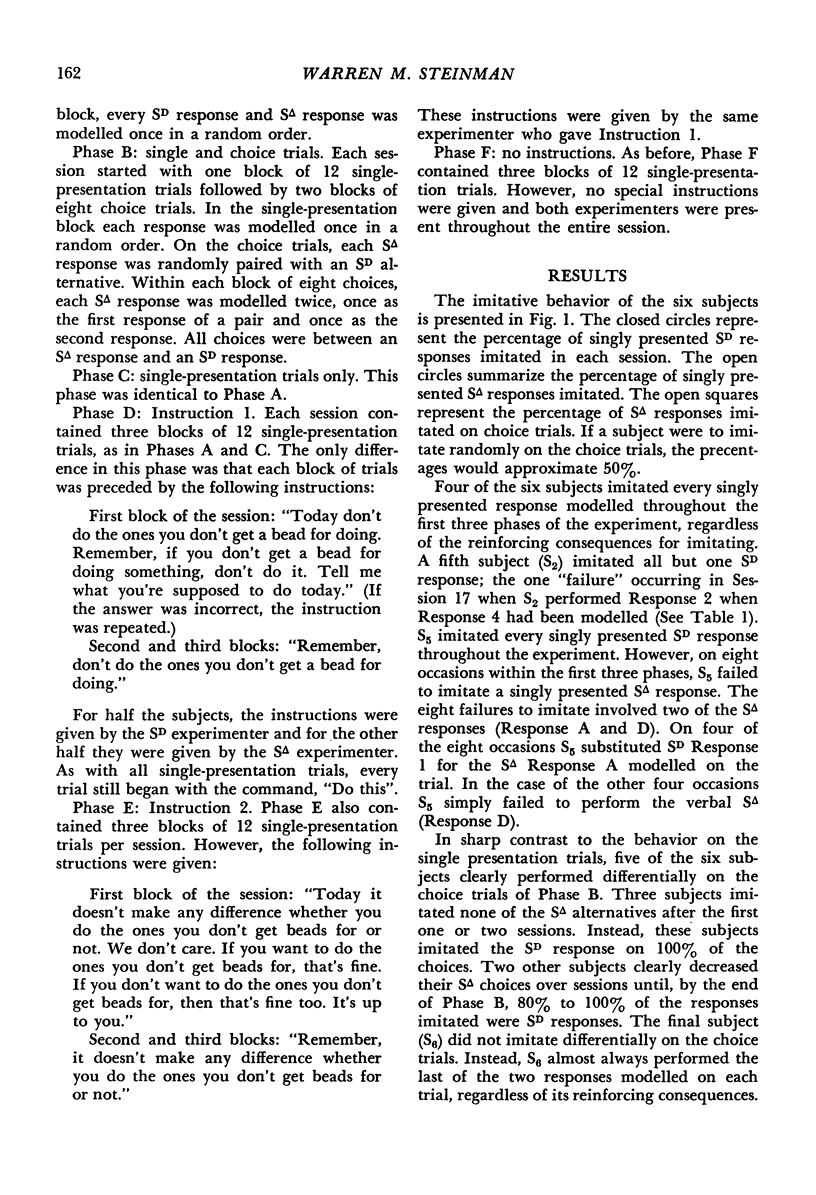
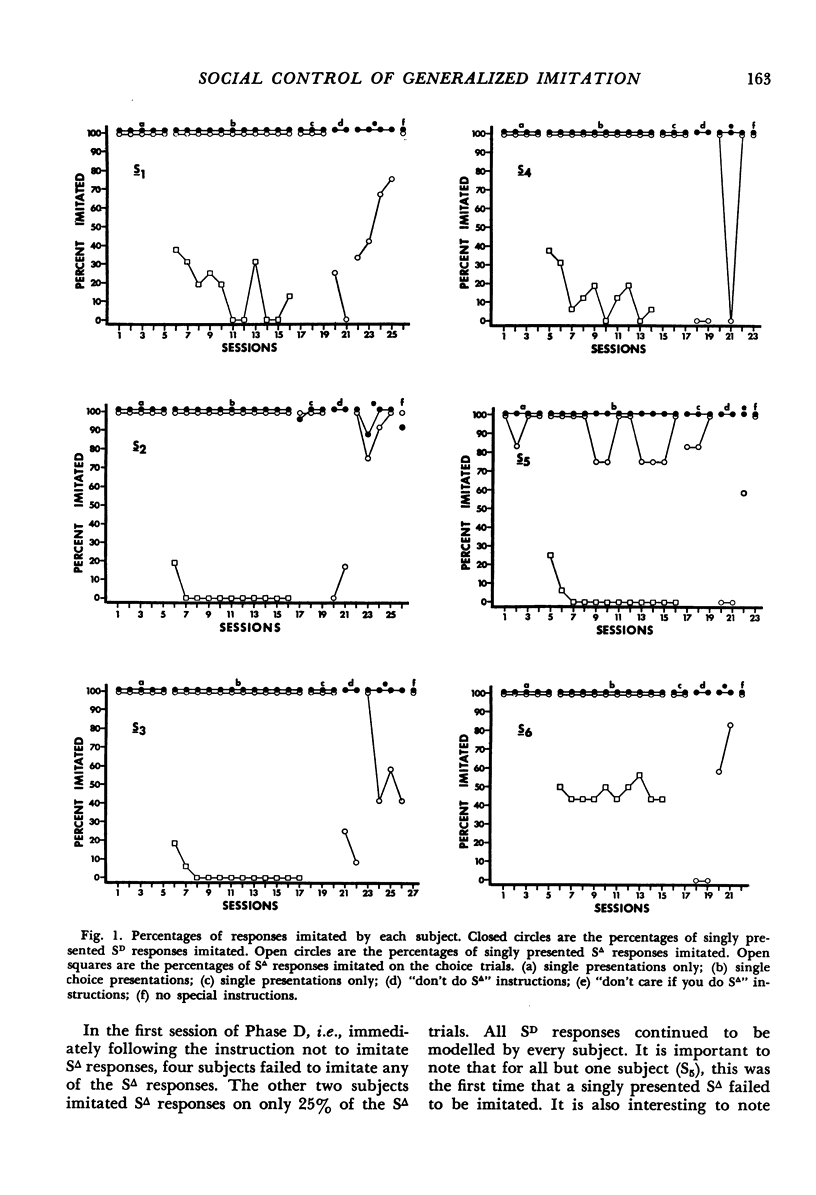
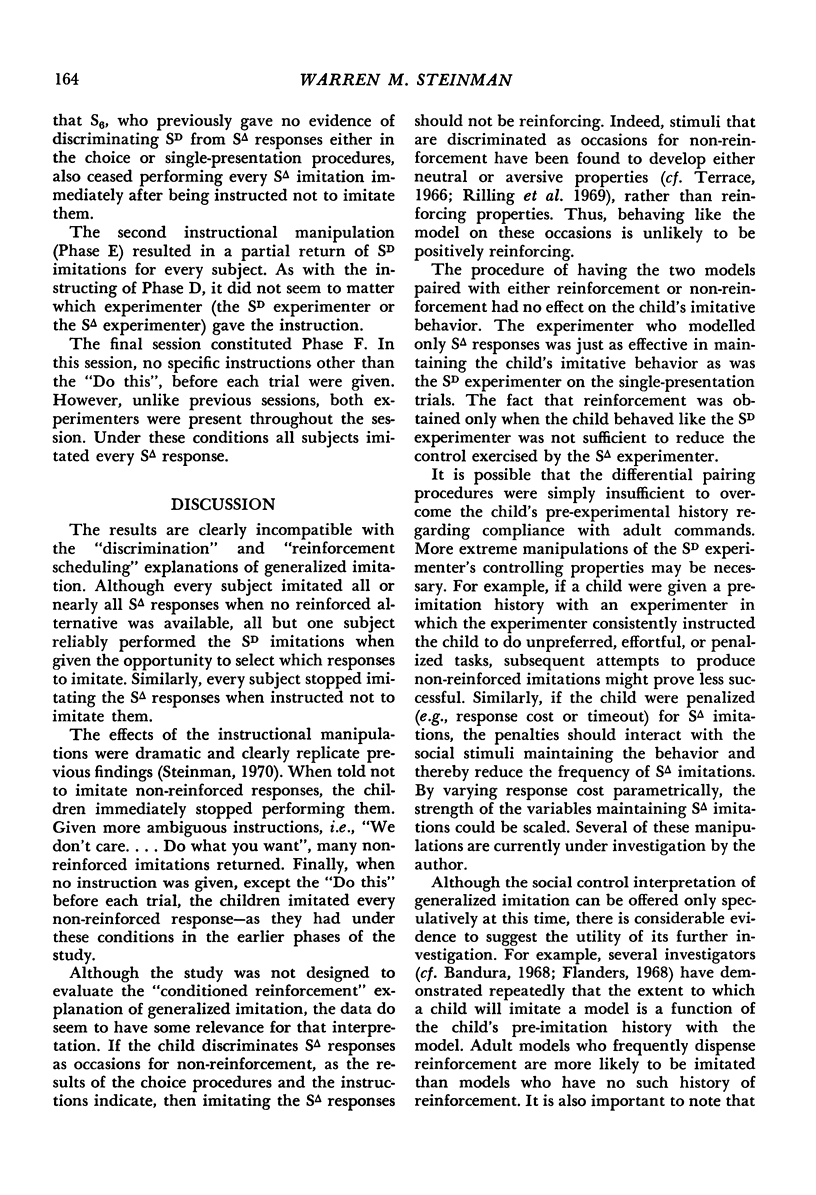


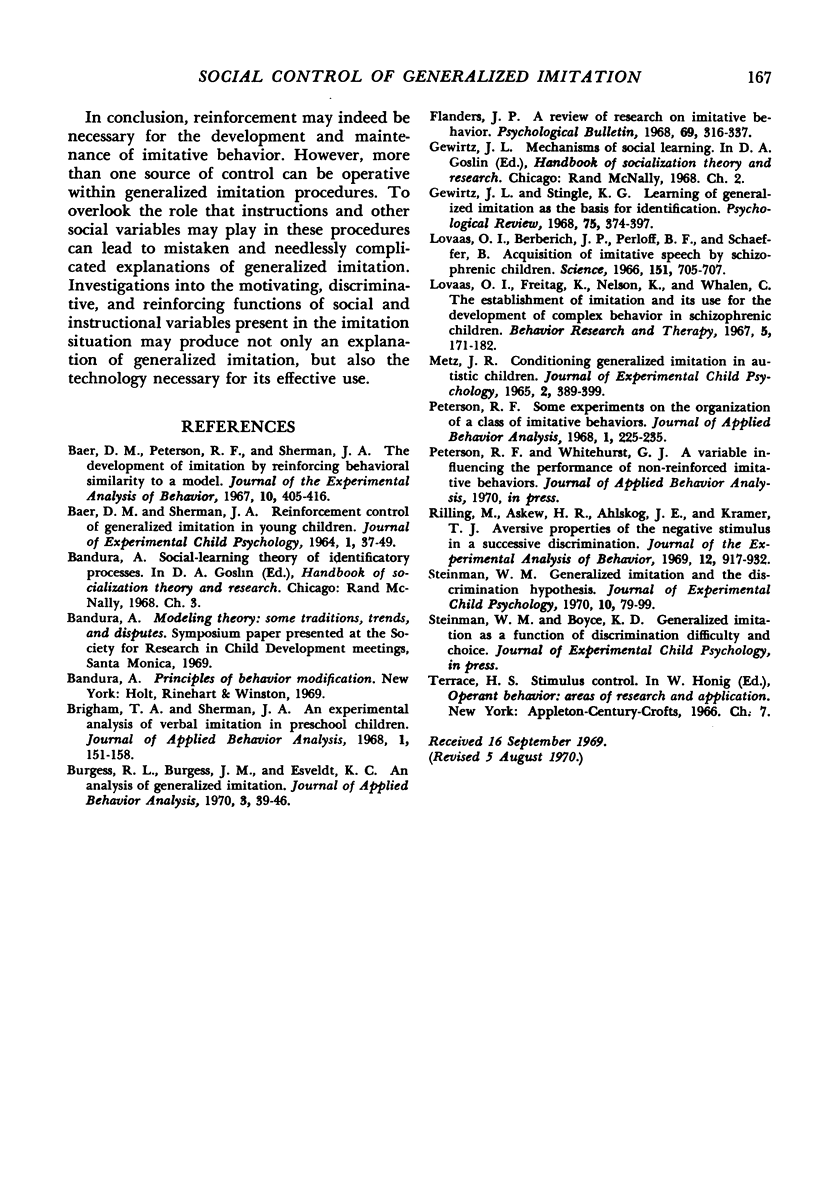
Selected References
These references are in PubMed. This may not be the complete list of references from this article.
- Baer D. M., Peterson R. F., Sherman J. A. The development of imitation by reinforcing behavioral similarity to a model. J Exp Anal Behav. 1967 Sep;10(5):405–416. doi: 10.1901/jeab.1967.10-405. [DOI] [PMC free article] [PubMed] [Google Scholar]
- Brigham T. A., Sherman J. A. An experimental analysis of verbal imitation in preschool children. J Appl Behav Anal. 1968 Summer;1(2):151–158. doi: 10.1901/jaba.1968.1-151. [DOI] [PMC free article] [PubMed] [Google Scholar]
- Burgess R. L., Burgess J. M., Esveldt K. C. An analysis of generalized imitation. J Appl Behav Anal. 1970 Spring;3(1):39–46. doi: 10.1901/jaba.1970.3-39. [DOI] [PMC free article] [PubMed] [Google Scholar]
- Flanders J. P. A review of research on imitative behavior. Psychol Bull. 1968 May;69(5):316–337. doi: 10.1037/h0025721. [DOI] [PubMed] [Google Scholar]
- Gewirtz J. L., Stingle K. G. Learning of generalized imitation as the basis for identification. Psychol Rev. 1968 Sep;75(5):374–397. doi: 10.1037/h0026378. [DOI] [PubMed] [Google Scholar]
- Lovaas O. I., Berberich J. P., Perloff B. F., Schaeffer B. Acquisition of imitative speech by schizophrenic children. Science. 1966 Feb 11;151(3711):705–707. doi: 10.1126/science.151.3711.705. [DOI] [PubMed] [Google Scholar]
- Lovaas O. I., Freitas L., Nelson K., Whalen C. The establishment of imitation and its use for the development of complex behavior in schizophrenic children. Behav Res Ther. 1967 Aug;5(3):171–181. doi: 10.1016/0005-7967(67)90032-0. [DOI] [PubMed] [Google Scholar]
- Peterson R. F. Some experiments on the organization of a class of imitative behaviors. J Appl Behav Anal. 1968 Fall;1(3):225–235. doi: 10.1901/jaba.1968.1-225. [DOI] [PMC free article] [PubMed] [Google Scholar]
- Rilling M., Askew H. R., Ahlskog J. E., Kramer T. J. Aversive properties of the negative stimulus in a successive discrimination. J Exp Anal Behav. 1969 Nov;12(6):917–932. doi: 10.1901/jeab.1969.12-917. [DOI] [PMC free article] [PubMed] [Google Scholar]


